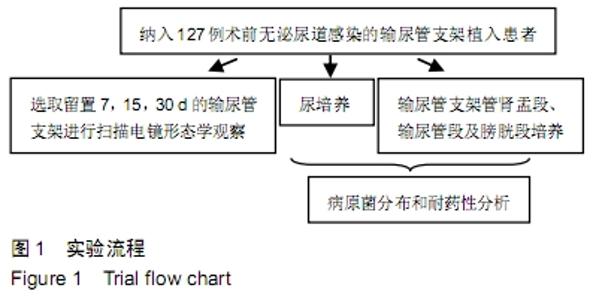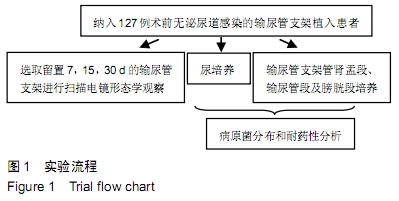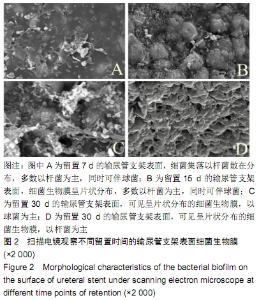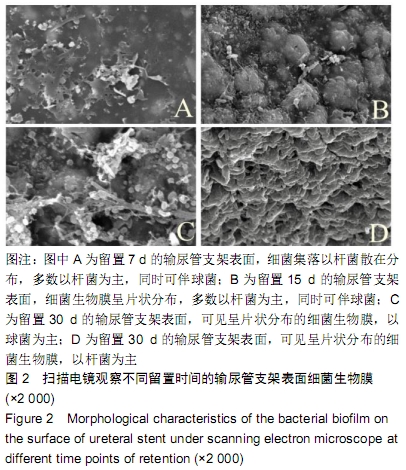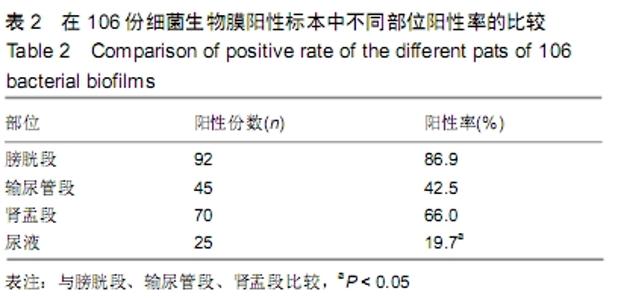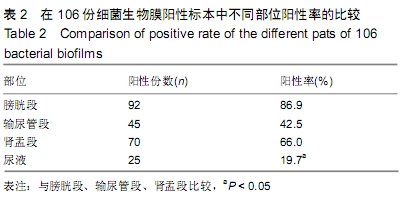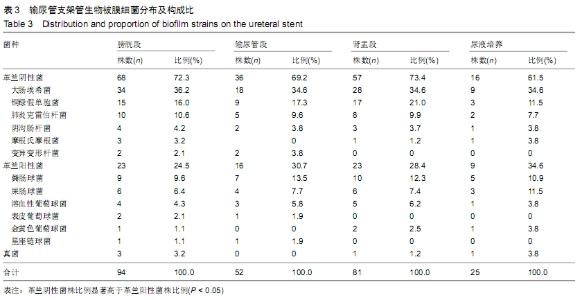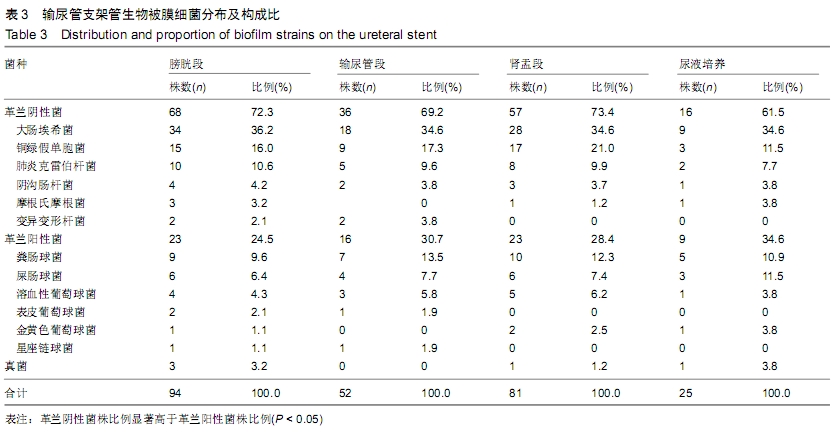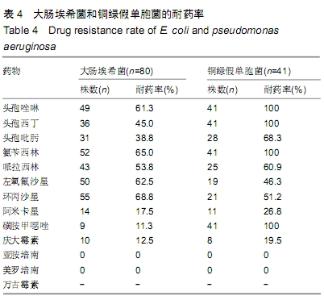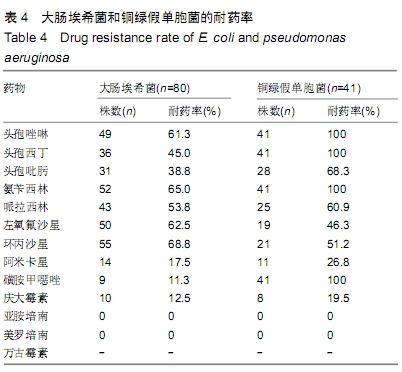[1] YAN J, BASSLER BL. Surviving as a Community: Antibiotic Tolerance and Persistence in Bacterial Biofilms.Cell Host Microbe. 2019;26(1):15-21.
[2] TENKE P, KÖVES B, NAGY K, et al. Update on biofilm infections in the urinary tract.World J Urol.2012;30(1):51-57.
[3] GENADY Z, DORON S, GIDEON L, et al. Prevention of Initial Biofilm Formation on Ureteral Stents Using a Sustained Releasing Varnish Containing Chlorhexidine: In Vitro Study.J Endourol. 2013;27(3):333-337.
[4] TEHRANCHI A, REZAEI Y, KHALKHALI H, et al. Effects of terazosin and tolterodine on ureteral stent related symptoms: a double-blind placebo-controlled randomized clinical trial.Int Braz J Urol. 2013;39(6):832-840.
[5] OZGUR BC, EKICI M, YUCETURK CN, et al. Bacterial colonization of double J stents and bacteriuria frequency. Kaohsiung J Med Sci.2013;29(12):658-661.
[6] COSTERTON JW, STEWART PS, GREENBERG EP, et al. Bacterial biofilms: a Common cause of persistent infections. Seience. 1999;284:1318-1322.
[7] DENSTEDT JD, CADIEUX PA. Eliminating biofilm from ureteral stents: the holy grail.Curr Opin Urol. 2009;19:205-210.
[8] MARKUS J, BADER, KATJA Z, et al. Encrustation of urologic double pigtail catheters—an ex vivo optical coherence tomography (OCT) study. Lasers Med Sci. 2013;28:919-924.
[9] GABI M, HEFERMEHL L, LUKIC D, et al. Electrical microcurrent to prevent conditioning film and bacterial adhesion to urological stents.Urol Res.2011;39:81e8.
[10] KLIS R, KORCZAK-KOZAKIEWICZ E, DENYS A, et al. Relationship between urinary tract infection and self-retaining double-J catheter colonization.J Endourol.2009; 23:1015e9.
[11] LOCK JY, WYATT E, UPADHYAYULA S, et al. Degradation and antibacterial properties of magnesium alloys in artificial urine for potential resorbable ureteral stent applications.J Biomed Mater Res A.2014;102:781-792.
[12] AYDIN HR, IRKILATA L, AYDIN M, et al. Incidence of bacterial colonisation after indwelling of double-J ureteral stent.Arch Ital Urol Androl.2016;87:291-294.
[13] LI S, PEPPELENBOSCH MP, SMITS R. Bacterial biofilms as a potential contributor to mucinous colorectal cancer formation. Biochim Biophys Acta Rev Cancer.2019;1872(1):74-79.
[14] OSCAR C, ROBERTO G, CARMELA S, et al. Effect of the combination of clarithromycin and amikacin on Pseudomonas aeruginosa biofilm in an animal model of ureteral stent infection.J Antimicrob Chemother.2011;66:1318-1323.
[15] CAUDA V, FIORI C, CAUDA F, et al. Clinical devicerelated article Ni-Cr-Co alloy ureteral stent:scanning electron microscopy and elemental analysis characterization after long-term indwelling.J Biomed Mater Res B Appl Biomater.2010;94:501-507.
[16] STICKLER DJ, FENELEY RC. The encrustation and blockage of long-term indwelling bladder catheters: a way forward in prevention and control.Spinal Cord.2010;48:784-790.
[17] ZAMANI H, SALEHZADEH A. Biofilm formation in uropathogenic Escherichia coli: association with adhesion factor genes.Turk J Med Sci.2018;48:162-167.
[18] STICKLER DJ. Clinical complications of urinary catheters caused by crystalline biofilms: something needs to be done.J Intern Med. 2014;276:120-129.
[19] 曹晋桂,刘鹏.细菌生物膜、滞留菌及其相关感染防控研究进展[J].中国感染控制杂志,2019,18(5):369-374.
[20] 阿不都赛买提•艾力.非复杂性输尿管镜碎石术后留置输尿管支架管必要性的Meta分析[D].乌鲁木齐:新疆医科大学,2017.
[21] OSCAR C, CARMELA S, ROBERTO G, et al. In vitro and in vivo effects of sub-MICs of pexiganan and imipenem on Pseudomonas aeruginosa adhesion and biofilm development.Infez Med. 2013;4: 287-295.
[22] MARIA MANOHAR C, DOBLE M. Papain immobilized polyurethane as an ureteral stent material. J Biomed Mater Res B Appl Biomater.2016;104(4):723-731.
[23] ZUMSTEIN V, BETSCHART P, ALBRICH WC, et al. Biofilm formation on ureteral stents – Incidence, clinical impact, and prevention.Swiss Med Wkly.2017;147:w1440.
[24] MEIJE Y, ALMIRANTE B, DEL POZO JL, et al. Daptomycin is Effective as Antibiotic-lock Therapy in a Model of Staphylococcus aureus Catheter-related Infection.J Infect.2014;68(6):548-552.
[25] DUPLANTIER AJ, VAN HOEK ML. The Human Cathelicidin Antimicrobial Peptide LL-37 as a Potential Treatment for Polymicrobial Infected Wounds.Front Immunol.2013;3(4):143.
|
